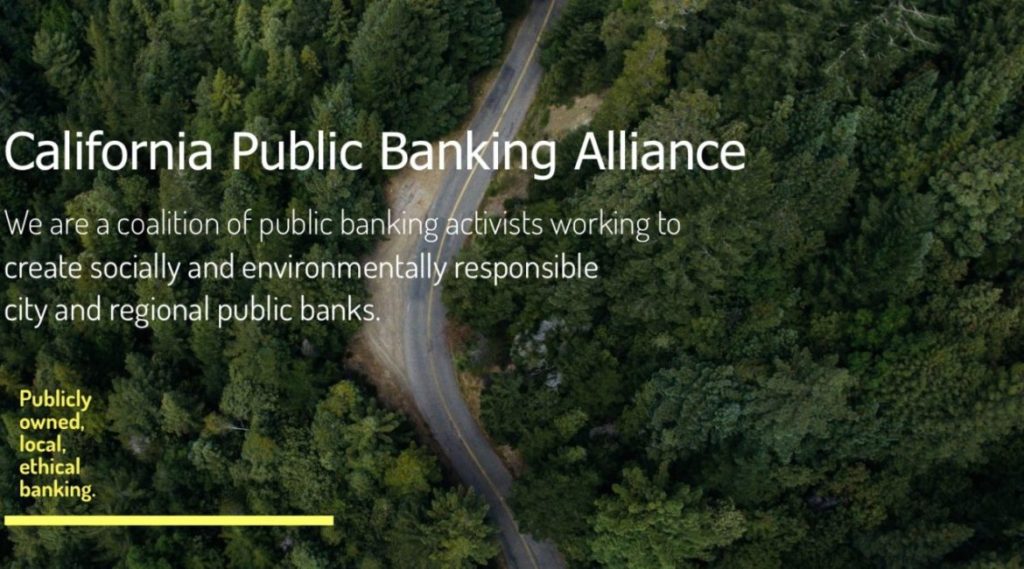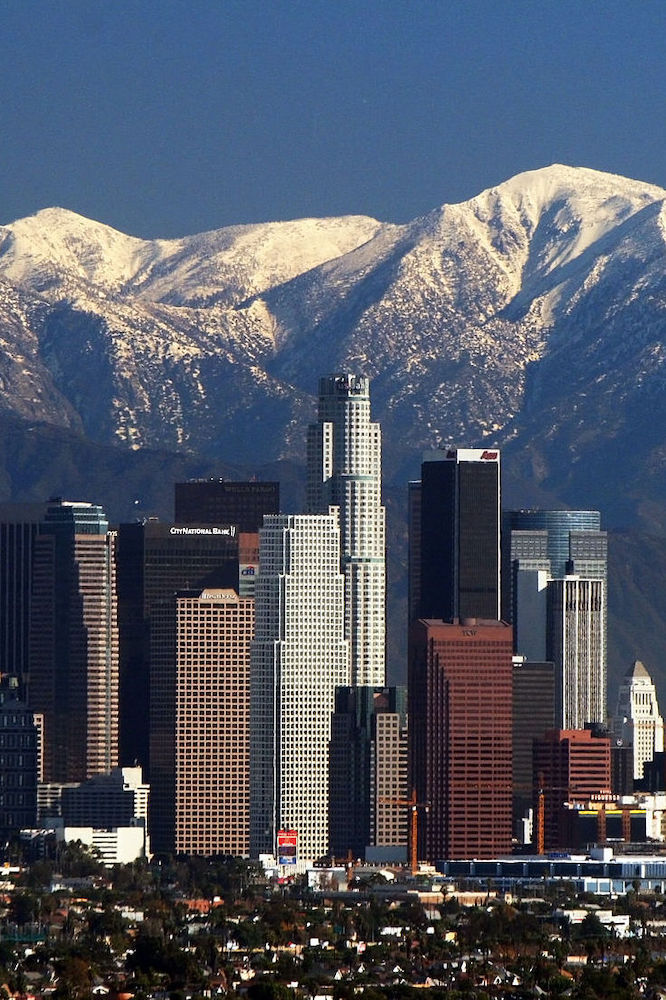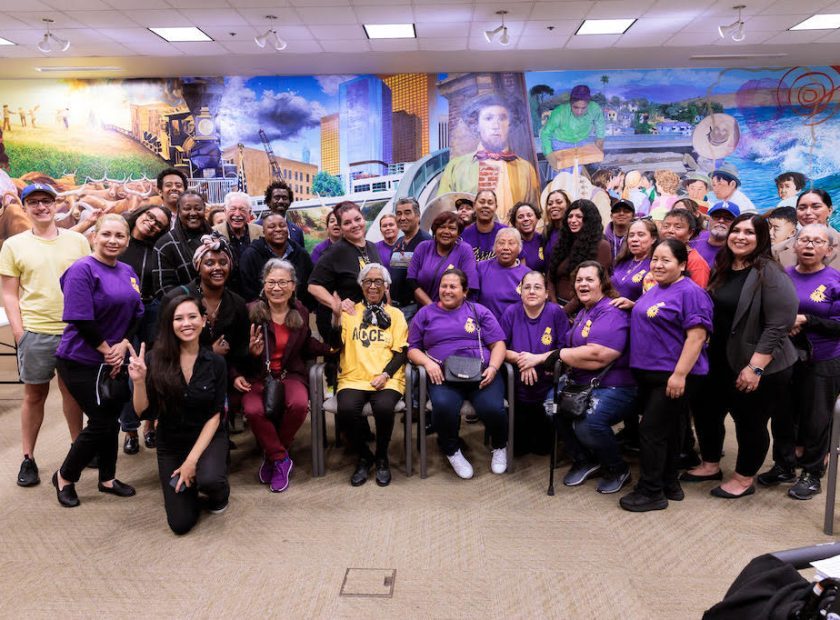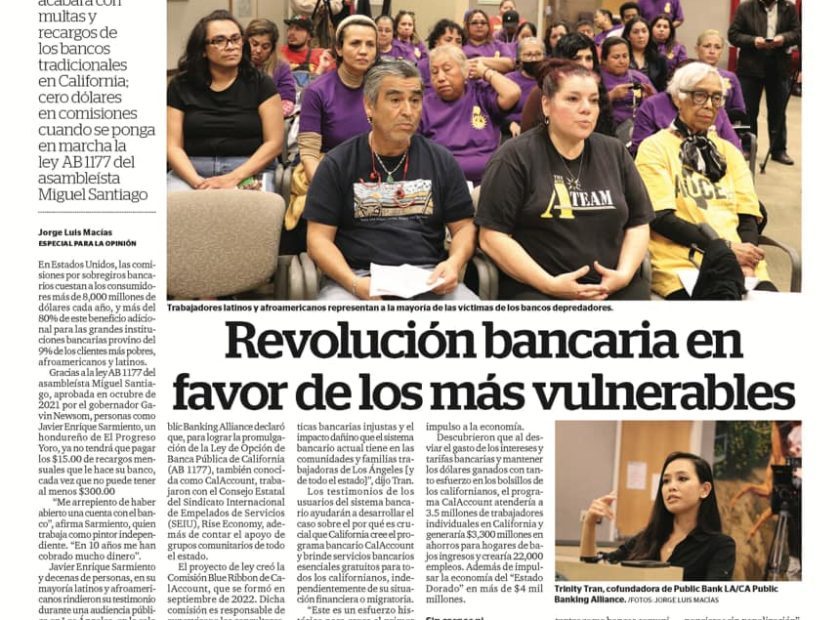
Banking Alliance

Public Bank?
Who We Are
The California Public Banking Alliance (CPBA) is a coalition of public banking activists founded in 2018 to advance socially and environmentally responsible public banks in California. Advocates throughout the state worked together to write and pass the California Public Banking Act (AB 857) in 2019. This legislation made California the first state in the nation to authorize the chartering of municipal public banks.
The CPBA passed a second public banking bill, the California Public Banking Option Act (AB 1177), also known as CalAccount, in 2021, to provide universal banking access for all Californians.

Alliance Cities
The California Public Banking Alliance represents nine cities and regions in
California working to establish city and regional-level public banks.
California Public Banking Act
The California Public Banking Act was the historic legislation passed by the CPBA that empowered cities and counties in California to establish public banks.
Endorsements
The California Public Banking Alliance has received endorsements from hundreds of organizations throughout the state, including national, regional, and community-based groups.
Public Banking Explainer
Discover the game-changer for your community’s economic future—public banking.
Resources
Spring 2024 Progress Report
City and regional public banking updates from California local governments.
1. WHAT IS A PUBLIC BANK?
Public banks are government-owned financial institutions that operate with the goal of serving the needs of their local community. They offer a range of services, such as lending for affordable housing, small business financing, and infrastructure development, that are tailored to meet the specific needs of the community. Unlike private banks, whose primary focus is on maximizing profits for shareholders, public banks prioritize the public good and supporting the community. This allows them to use their resources, such as deposits and lending capabilities, to benefit local residents and businesses rather than prioritizing profits for private shareholders. This focus on serving the community allows public banks to play a vital role in promoting economic and social well-being in their regions.
Read our Resource Booklet to learn more about public banking.
2. WHAT IS THE MISSION OF THE CALIFORNIA PUBLIC BANKING ALLIANCE?
The goal of the California Public Banking Alliance (CPBA) is to advocate for the establishment of public banks in California that prioritize social and environmental responsibility, regional economic development, and adherence to transparent, ethical, sustainable, and regenerative investment practices. By forming partnerships with local community banks and credit unions, these public banks will also enhance the capabilities of existing financial institutions and serve the needs of all members of the community, particularly those who are underserved.
3. WHO ARE THEY TYPICAL CUSTOMERS OF A PUBLIC BANK?
Public banks will primarily serve municipal service providers, such as school districts and public utility commissions, and partner with local community banks, credit unions, and CDFIs to fund projects that meet community needs. These banks will also create investment programs that align with their municipality’s economic development plans, such as housing lending (especially affordable housing), enterprise lending (small and medium size businesses), and infrastructure spending that is financially feasible and environmentally sound. Public money will be recycled locally, rather than being sent to climate-destructive projects and shareholder returns, and public banks will support the work of local financial institutions while focusing on meeting the financial needs of municipal agencies.
4. CAN RESIDENTS DO THEIR BANKING AT A PUBLIC BANK?
There are two main reasons why California’s local public banks will not receive deposits from individuals. Firstly, per AB 857, they are not meant to compete with existing local banking services and will instead support community banks and credit unions by backing loans and evaluating local projects for investment. Secondly, these banks will not have retail branches and will only handle the funds of municipal agencies.
5. WILL PUBLIC BANKS BE INSURED?
The California Public Banking Act (AB 857), which allows cities and counties to establish their own banks, requires California public banks to obtain Federal Deposit Insurance Corporation (FDIC) insurance before they can be chartered by the state. Public deposits in these banks will be collateralized in the same way as deposits in private banks, and public banks will be subject to the same regulations as private banks and will receive the same deposit protection benefits.
6. WHERE WILL THE MONEY COME FROM TO START MUNICIPAL PUBLIC BANKS?
Investing in the start-up of municipal public banks is an investment in the future of our communities and local businesses. Public banks amplify the impact of public funds by returning money to our communities. There is a range of options for funding the start of a public bank, and each municipality will determine which sources are most appropriate for their bank based on its size and scope. These options include appropriations from the local government’s budget, earnings from investment pools directed towards the public bank, bonds authorized by a citizen vote, grants from the federal government, and voluntary contributions from supporters of public banking.
Once a public bank receives a charter under the California Public Banking Act, it will be able to accept deposits from municipal departments and neighboring municipalities, as well as funds from pension funds, socially responsible mutual fund investment vehicles, and other institutional investors, or in partnership with a local financial institution.
7. HOW WILL PUBLIC BANKS BE GOVERNED?
Each public bank will be governed by a board of qualified directors selected based on their reputation, financial knowledge, and commitment to advancing the mission and soundness of the bank. Unlike private banks, where board members are typically the largest investors and can earn millions of dollars for their time, public banks are owned by the public. As a result, elected representatives will choose a board of qualified individuals who will be held to a higher standard of accountability and transparency in their management decisions, and who will receive reasonable compensation for their work. This is one guardrail to help ensure that public banks are managed in the community’s best interests and not solely for the benefit of a select group of investors.
The governance of each public bank will be informed by input during the creation of the business plan, based on the following principles:
- Independent boards of directors are composed of community residents and experts in public finance, banking, affordable housing, and climate change mitigation.
- Strictly regulated by the state of California and the FDIC and will operate under strict mandates to safeguard and grow municipal assets.
- operate for the benefit of the community instead of individual shareholders or executives.
Elected officials, banking experts, and community members can provide input on the structure of local public banks within guidelines, ensuring the bank meets the needs of the local area and upholds its social and environmental mandate, while also maintaining financial stability. This guarantees the bank aligns with the specific needs and goals of the region by involving the community in its formation and management.
8. ISN’T IT RISKY TO PUT THE MANAGEMENT OF PUBLIC BANKS IN THE HANDS OF POLITICIANS?
Public banks will not be managed by politicians. Instead, they will be governed by professional bankers and overseen by a board of directors, which may include elected representatives. Public officials will help set up the structure within the legalities allowed under the controlling legislation, but professional bankers, directed by accountable boards of governors, will handle all operations.
The Bank of North Dakota (BND), the only publicly owned state bank, is extremely profitable – more profitable than Goldman Sachs and JP Morgan Chase, according to the Wall Street Journal. It is very risk-averse, lends conservatively, does not gamble in derivatives, or put deposits at unacceptable risk. It is able to lend at lower than market rates because its costs are very low. It does not pay bonuses or commissions, has no high paid executives, nor shareholders bleeding off profits in the form of dividends. It does not compete with local banks, but partners with them, allowing them to become the front office dealing with customers and keeping the public bank’s costs low.
Public sector banks, while rare in the US, are common in other countries and studies have shown that they are actually more profitable, safer, less corrupt, and more accountable than private banks.
9. WHY HAVE PUBLIC BANKS IF CREDIT UNIONS EXISTS?
Credit unions are great alternatives to the Big Bank Bullies, as the National Association of Federally-Insured Credit Unions characterizes Wall Street Banks. We strongly encourage people to do their banking with credit unions and local community banks. Credit Unions are owned by defined customer members, not private shareholders. Customers join because they know that their credit union is focused on providing them with the best services, not on maximizing profits for distant shareholders. Credit unions are accountable to their depositors, and not the general public.
On the other hand, public banks are owned by governments so they are accountable to elected representatives. Public banks support credit unions and community banks by making joint participation loans, providing them credit, purchasing their mortgages, and cooperating in other ways that make more capital available to them to provide low-cost consumer services. North Dakota, with its state public bank, has more credit unions and community banks per capita than any other state.
10. HOW DO PUBLIC BANKS AID IN ECONOMIC REDEVELOPMENT AND AFFORDABLE HOUSING?
California is facing a severe shortage of affordable housing, with many residents paying over 50% of their income on rent and utilities. This is one reason the state has among the highest numbers of unhoused people in the nation. Public banks can help alleviate this crisis by providing loans to develop affordable housing, including construction loans and long-term bond and mortgage loans for multi-unit housing developments. By partnering with local community banks, credit unions, and community development financial institutions (CDFIs), public banks can potentially become significant suppliers of long-term affordable housing credit through partnership loans. Public banks could also fund property acquisition programs to acquire existing rental properties and place them into permanently affordable cooperative housing arrangements and land trusts.
In Establishing the Municipal Bank of Los Angeles: A Conceptual Framework, Karl Beitel notes, “The primary advantage offered by a Municipal Bank is the creation of a dedicated, multi-purpose entity that combines a multitude of capacities required to identify, underwrite, and originate low-cost, high-impact credit, enabling the City to pursue more socially beneficial and economically just forms of economic development.”
A July 2021 NBC Bay Area special explained one aspect of the glacially slow process of building affordable housing “Developers have to put together a jigsaw puzzle of funding from government agencies and private investors before they can build. They say that process can take up to a decade.” This observation is supported by the research done for the Public Bank East Bay viability study and the HR&A Team Lending Gaps and Priorities Analysis report for the San Francisco Public Bank task force. Public banks offer a smooth pathway to funding and an alternative to reliance on private investors and the private, for-profit housing market. They can help ensure that future housing development linked to publicly funded transit investments does not result in the extremely common widespread displacement of residents in predominantly African-American, Asian, and Latino working-class neighborhoods. Public banks can also contribute by co-lending with local private banks and encouraging and back-stopping investments in socially responsible local housing initiatives.
12. HOW WILL PUBLIC BANKS SUPPORT RACIAL EQUITY?
California public banks, as mission-driven institutions, will prioritize racial equity and serve the needs of underrepresented communities by including these commitments in the bank’s mission statement and charter. In part, public bank directors will be chosen based on their understanding and support for racial equity and combating systemic racism. Boards of directors whose ethnicity, gender, and class backgrounds reflect the communities they serve are a rarity in the traditional banking industry–public banks can buck that trend.
Public banks aim to support racial equity by using their lending capabilities to contribute to affordable housing projects in a targeted and impactful way which could include making loan approval contingent on plans for tenant diversity and community involvement in decision-making during construction. Loans for small businesses can be evaluated with consideration for the specific needs of BIPOC business owners and the importance of their connections to the community. Public banks could also focus on supporting green infrastructure projects in neighborhoods that would benefit the most from them.
All of these initiatives–housing, business loans, and green infrastructure–contribute to the goal of building long-term wealth for BIPOC communities within the public bank’s city or region. This is well-documented to positively impact the health, education, and overall well-being of marginalized communities and their neighborhoods.
11. HOW DO PUBLIC BANKS AID IN GREEN ENERGY INFRASTRUCTURE AND DEVELOPMENT?
A city or region-owned public bank could play a significant role in addressing the environmental crisis and reducing the impacts of climate change by financing clean energy infrastructure, increasing renewable energy lending, and incorporating sustainability investment goals into city redevelopment plans.
The Sparkassen network of regional public banks in Germany has been instrumental in Germany’s transition to a green energy economy, with 73% of investment in renewable energy coming from the public bank sector. This has contributed to renewable energy accounting for 41% of energy production and consumption in Germany (compared to only 11% in the US). German public banks offer interest rates as low as 1% on loans, significantly lower than commercial bank rates.
The worker-owned Banco Popular in Costa Rica is another example of a publicly controlled bank funding environmentally friendly projects, including sustainable water supply systems, residential solar energy panels, hydroelectric energy generation, and energy-efficient retrofitting. Banco Popular is also a socially responsible investor, working with co-ops and public institutions, as well as unbanked and underbanked populations, to provide financial services that are often neglected by large multinational banks operating in Costa Rica.
Learn more about how public banking can support climate justice: Public Banking for Climate Justice.
13. CAN PUBLIC BANKS SERVE CANNABIS BUSINESSES?
Providing banking services for the millions of dollars spent on cannabis in California is a highly examined issue. Many legal distributors have no reliable means for the normal financial services needed to run a business. While public banks are often discussed as a potential solution for cannabis businesses, as long as cannabis remains a Schedule 1 federally prohibited drug, public banks are unlikely to be able to offer services to these businesses due to the difficulty of gaining approval from the FDIC and the Federal Reserve System. Federal law will have to change to protect those public banks that choose to serve cannabis businesses from potential prosecution. In addition, public banks are not chartered as banks to private businesses.
14. ARE THERE PRECEDENTS FOR PUBLIC BANKING IN THE US?
The Bank of North Dakota (BND) is a profitable public bank established in 1919. In 2021, the state-owned BND achieved a healthy 15% return on investment. It has a history of weathering economic downturns, including the Great Depression, the Great Recession, and the COVID-19 pandemic. During COVID-19, BND provided the largest per capita Paycheck Protection Program (PPP) loans to small businesses in all 50 states, helping them to recover quickly and efficiently. The Bank of North Dakota offers low-interest loans to small businesses and start-ups and below-market student loans. The BND works with private banks to provide a secondary market for mortgages and supports local governments by purchasing municipal bonds.
Since the passage of the California Public Bank Act (AB 857), municipalities and regions in California, including Los Angeles, San Francisco, the East Bay, San Diego, and the Central Coast, have begun formulating public bank business plans. Many cities and states are pursuing the formation of public banks. Advocates in New Mexico are working with legislative officials to create a state public bank, as are activists in New York, New Jersey, Illinois, Maryland, Massachusetts, Mississippi, Ohio, and Washington. The cities of Seattle, Denver, Chicago, Philadelphia, and the District of Columbia all have active public banking campaigns. Support for public banks transcends political divides. Democratic and Republican lawmakers in Michigan have jointly introduced legislation to establish a state public bank. Also, it’s important to note that the only state-wide public bank currently in the United States is in the state of North Dakota, which is traditionally a Republican-leaning state, with no Democratic state legislators.
Latest News
Stay informed with the latest public banking updates from the California Public Banking Alliance.













